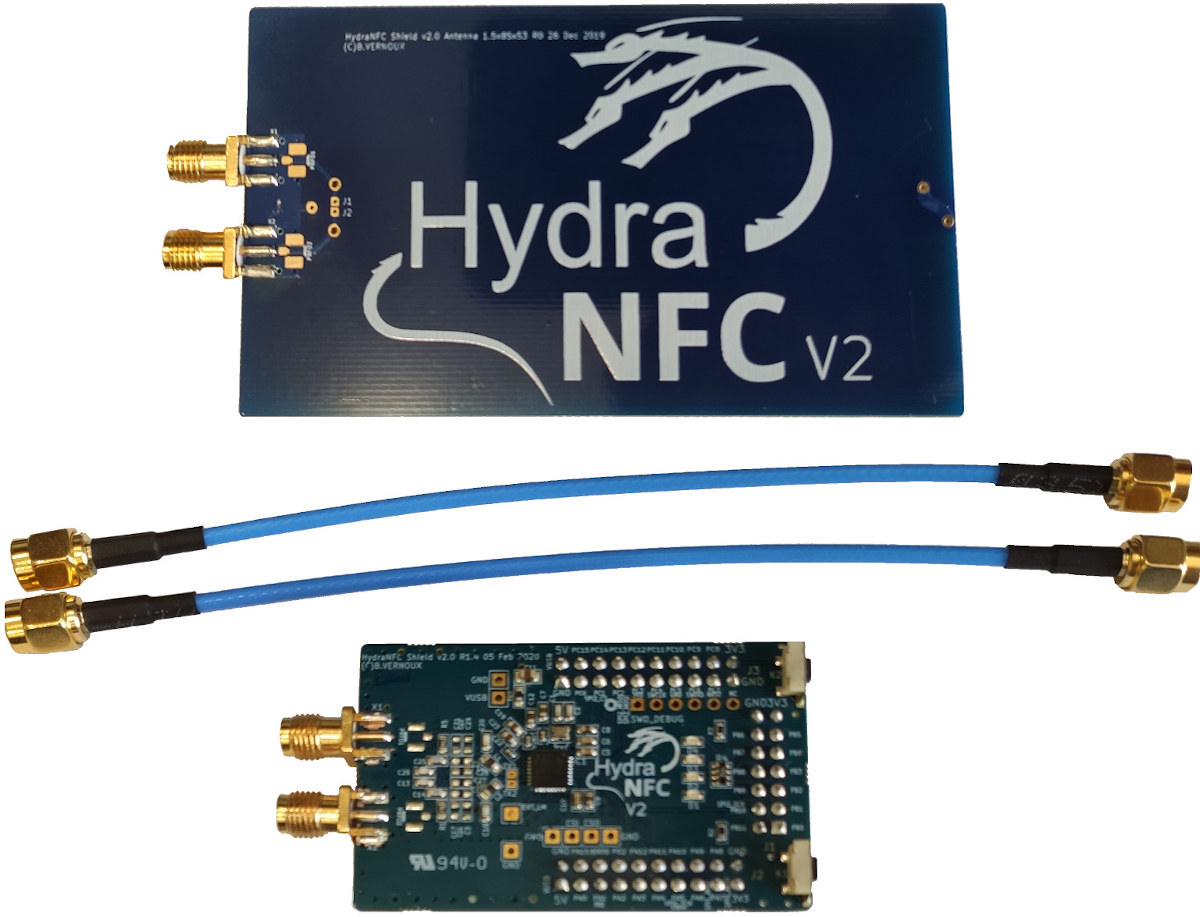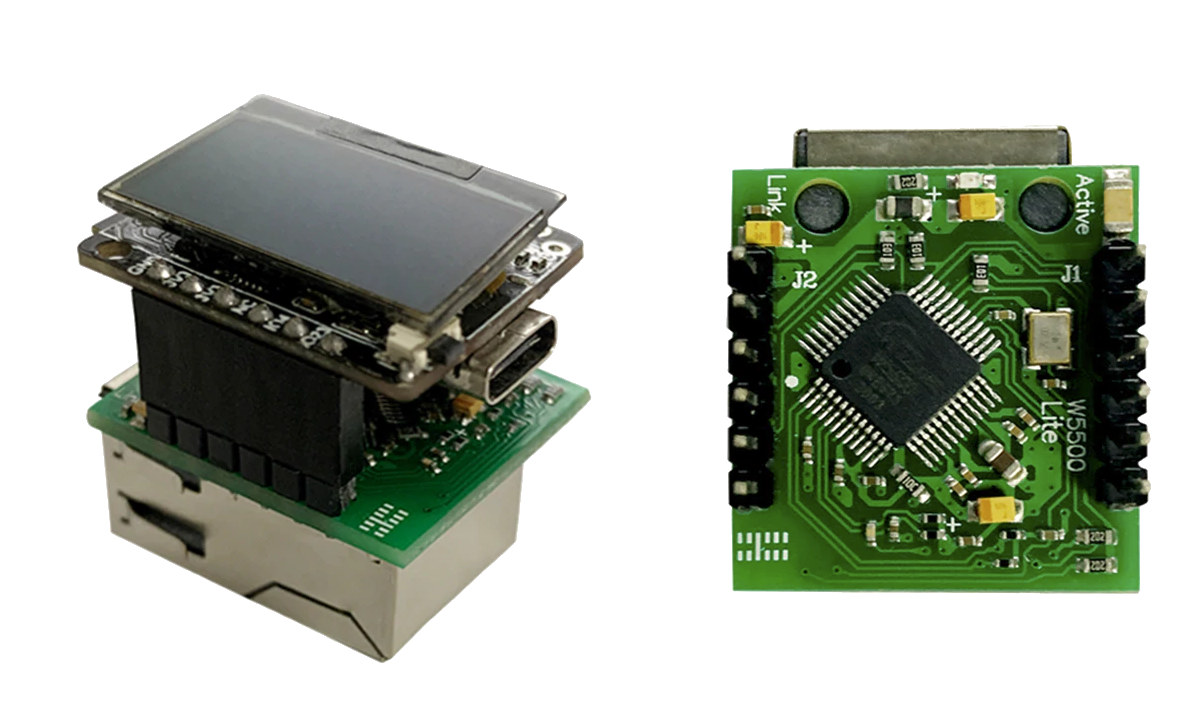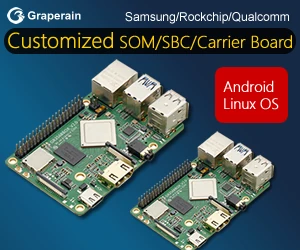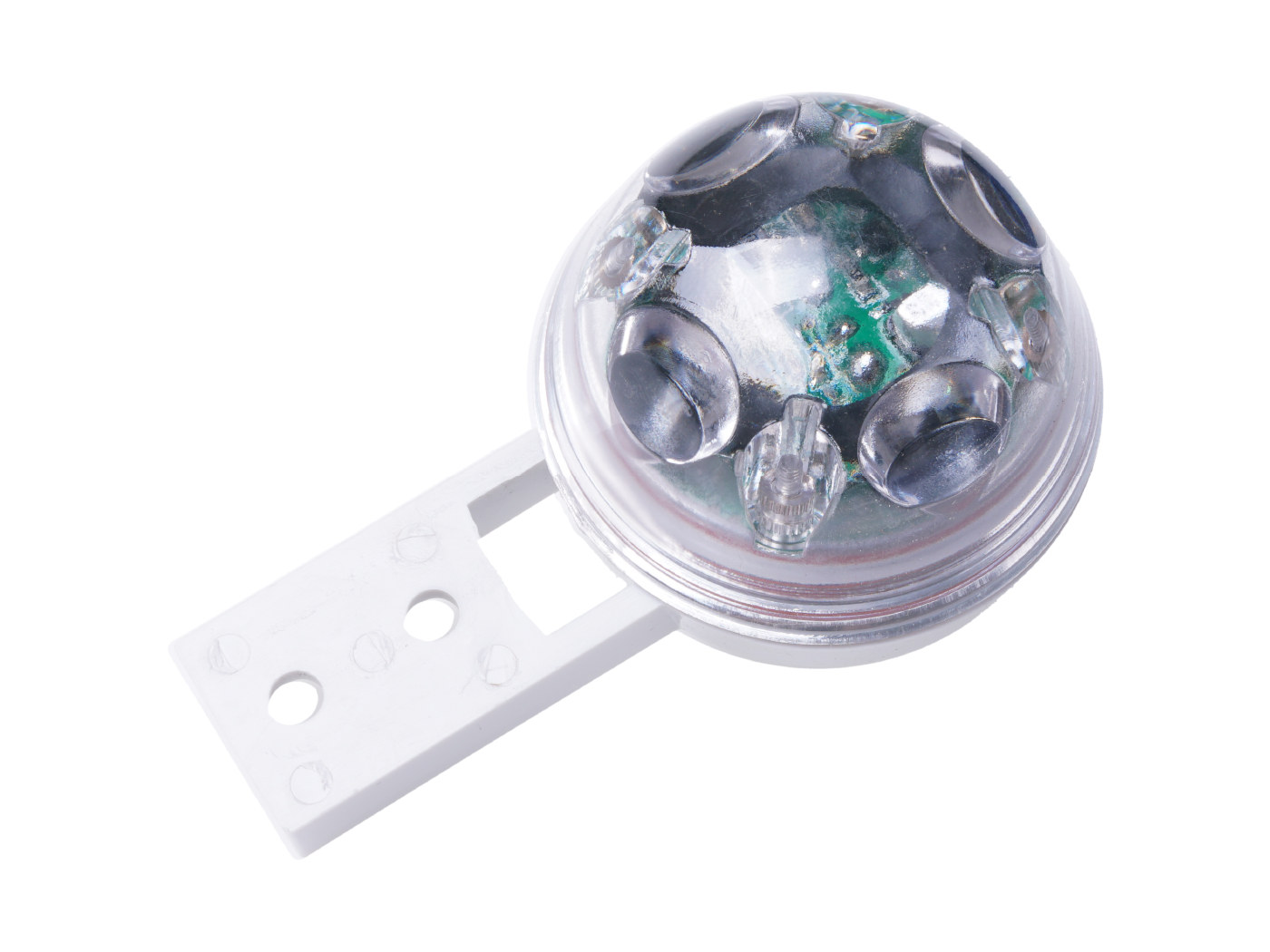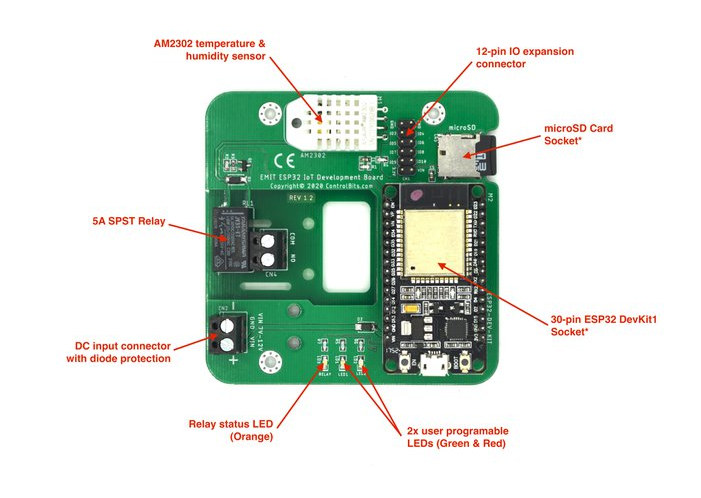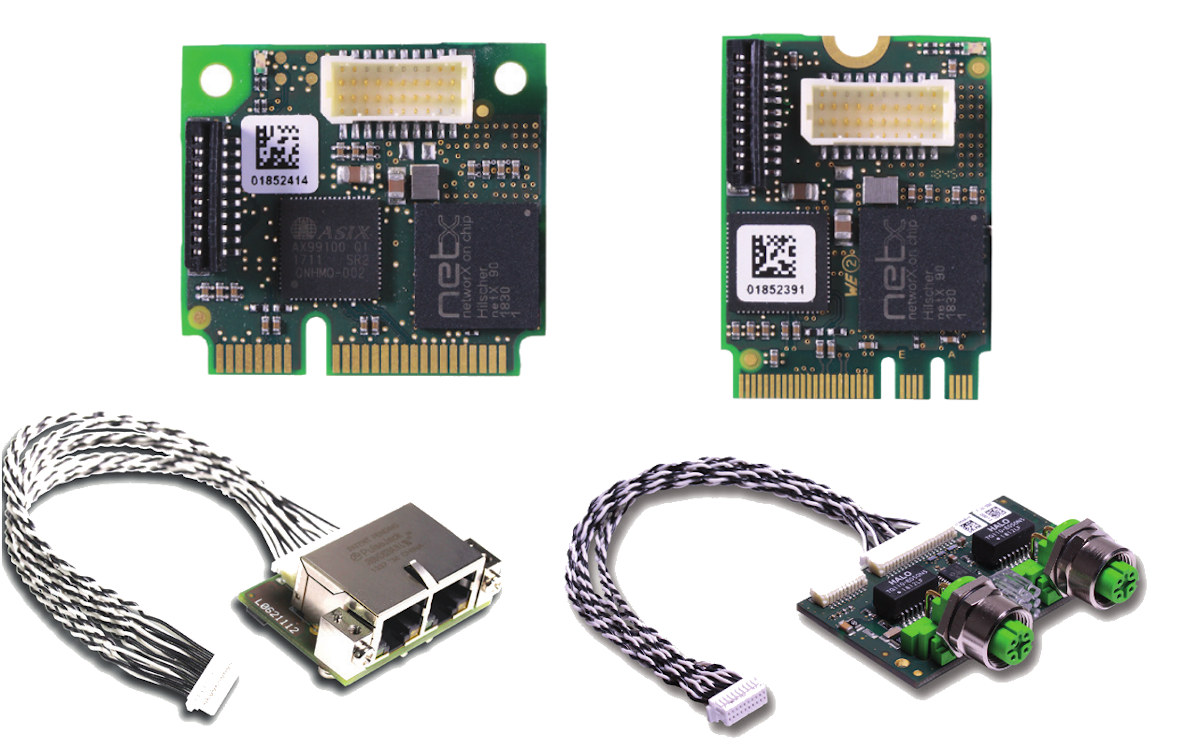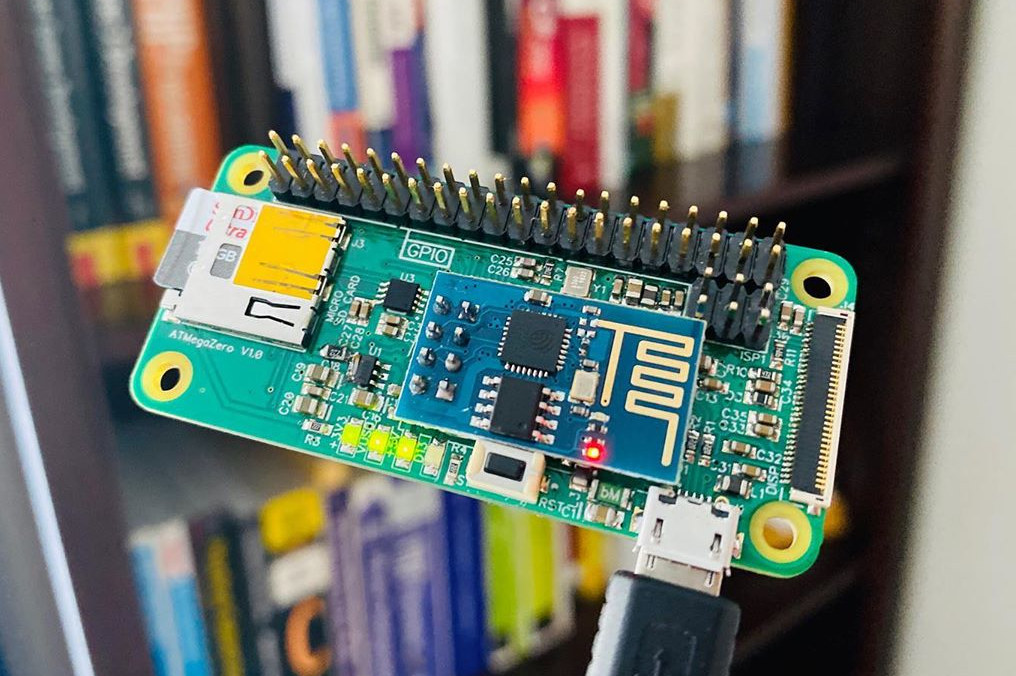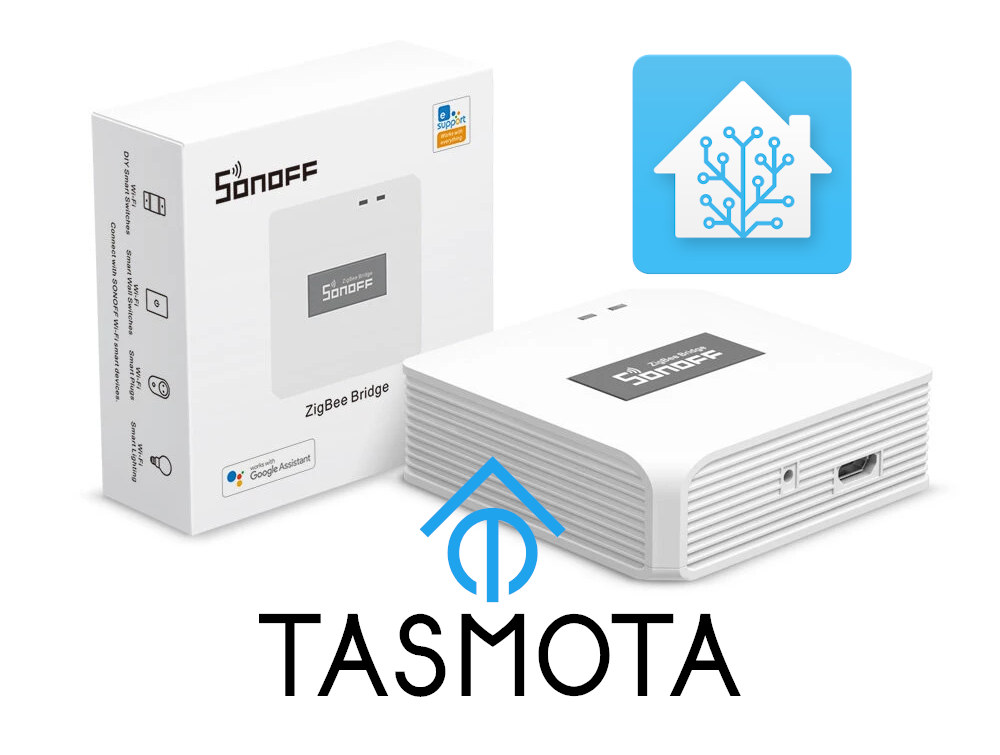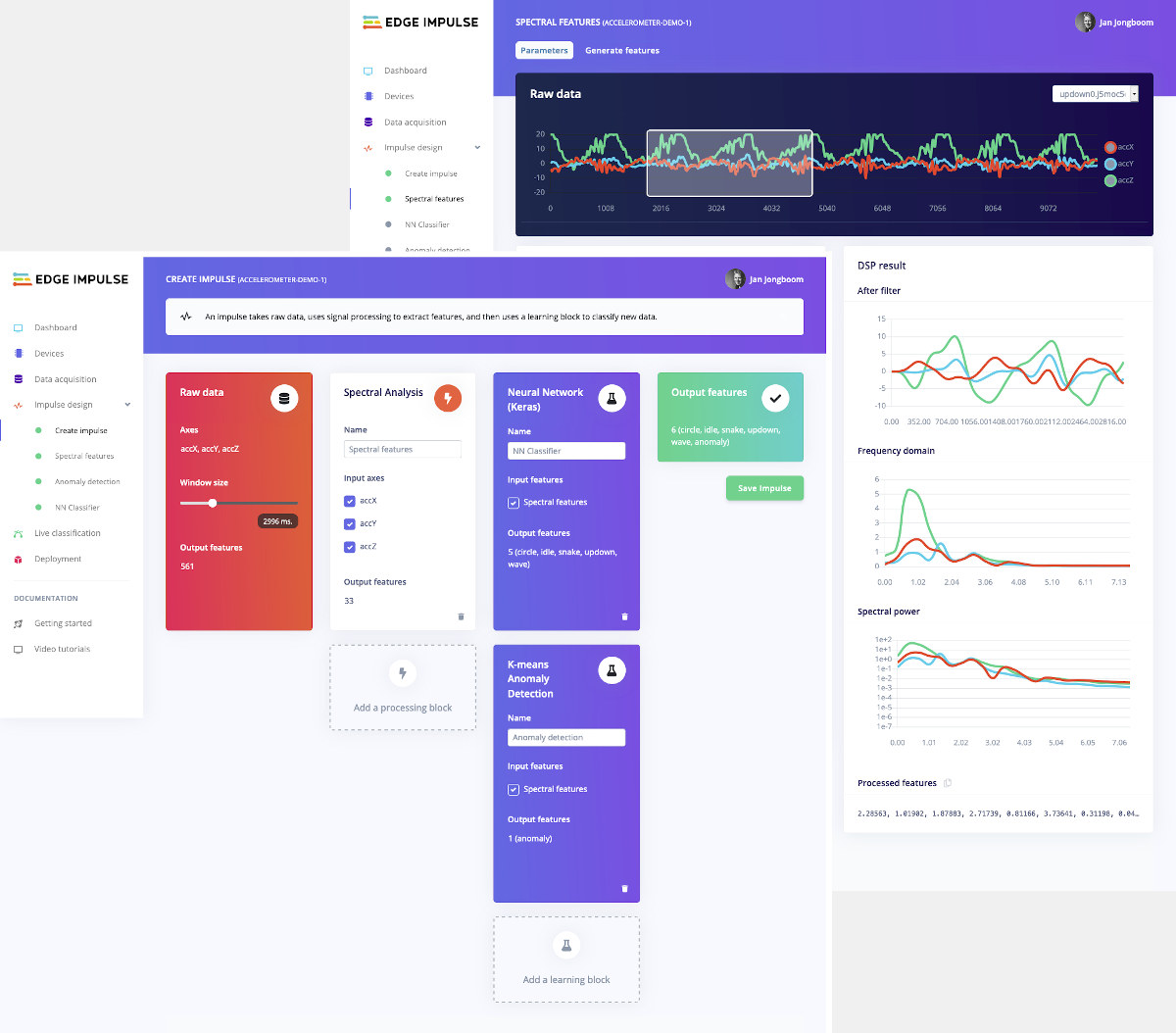When Benjamin Vernoux is not working on open-source firmware & tools for AirSpy R0/R2/mini SDR, he spends his time on other projects such as HydraBus STM32 board with NFC support which we covered back in 2014. The HydraNFC Shield that came with the board was based on Texas Instruments TRF7970A NFC chipset with limited features and not compliant with any RF/NFC standard. Benjamin has now launched HydraNFC Shield v2 powered by STMicro ST25R3916 NFC chipset and equipped with a differential antenna. The new version of the shield still works with the original HydraBus board and allows much more output power (1,600mW vs 200 mW) and supports a wider range of NFC features & standards. HydraNFC Shield v2 features and specifications: NFC Chipset – STMicro ST25R3916 high-performance NFC universal device supporting NFC initiator, NFC target, NFC reader and NFC card emulation modes Antenna – Differential antenna with power up to 1600mW […]
TTGO T-Lite W5500 ESP32 WiFi & Bluetooth Board Comes with OLED Display, Optional Ethernet Add-on Board
If you like tiny boards with Ethernet, TTGO T-Lite W5500 development board may be an interesting option, as the ESP32 board comes with a built-in OLED, and female headers to connect an Ethernet add-on board called W5500 Gateway Module. LilyGO TTGO T-Lite W5500 specifications: SoC – Espressif System ESP32 dual-core WiFi and Bluetooth SoC with 520KB SRAM Storage – 4MB flash Display – 0.96-inch OLED display (SSD1306 driver) Connectivity 802.11 b/g/n WiFi 4 up to 150 Mbps, and Bluetooth 5.x BR/LE via ESP32 SoC, on-board ceramic antenna or external antenna (selectable with a resistor?) Optional Ethernet via SPI Ethernet board based on Wiznet W5500 USB – 1x USB Type-C port for power and programming via CP2104 USB to TTL chip I/Os 8+6 through holes with GPIOs, SPI, ADC, Touch, 5V, 3.3V, GND Operating voltage – 2.7V-3.6V Misc – Boot & Reset button, 40MHz crystal oscillator Power Supply – 5V/1A via […]
Industrial-Grade Optical Rain Gauge Beams Infrared Light to Measure Rainfall
I remember when I was a kid, we had rain gauge to measure the amount of rainfall in the garden, so after heavy rains, I liked to have a look to find out how much rain actually fell. Those collected water in a tube, and we could read the millimeter value right on the tube. But now with the Internet of Things, we can have smarter solutions including tipping-bucket rain gauges that collect water and usually report the data via an RS-232 port. But I’ve just found out there’s another method to measure rainfall with an industrial-grade optical rain gauge I just found on Seeed Studio for $99.00. It’s a sphere about the size of half a tennis ball that beams infrared light instead of collecting water and somehow managed to accurately report the amount of rainfall. RG-15 optional rain gauge specifications: Nominal Accuracy – ±10% Host Interfaces J1 Terminal […]
EMIT ESP32 IoT Development Board Comes with Temperature & Humidity Sensor, 5A SPST Relay (Crowdfunding)
ControlBits EMIT (Environmental Monitoring for the Internet of Things) is a baseboard compatible with DOIT ESP32 DevKit V1 development board and equipped with a temperature and humidity sensor, a relay, a 12-pinGPIO connector, and a MicroSD card. EMIT ESP32 IoT development board specifications: Socket for DOIT ESP32 DevKit v1 board with WiFi and Bluetooth LE connectivity Storage – MicroSD card socket Sensor – AM2302 temperature & humidity sensor with -40° to +80° C and 0 to 99.9 %RH ranges. Relay – 5A SPST relay output with status LED Expansion – 12-pin GPIO header Misc – 2x programmable status LEDs (red & green) Power Supply – 5V via USB on ESP32 board, or external 7-12 V supply via terminal block Dimensions – 81 x 81 mm (PCB only) The board comes with mounting holes so it can be wall-mounted, and an optional enclosure is also available. Some applications for the board […]
M.2 and Half-size mPCIe Cards Support Real-Time Ethernet and FieldBus Networks
Hilscher cifX M.2 and half-size mini PCIe cards powered by the company’s NETX 90 network-on-chip multi-protocol Cortex-M4 SoC bring real-time Ethernet and FieldBus to compatible systems. The tiny cards are designed for PC-based devices such as IPC’s, HMI’s and robots, and support various firmware for PROFINET IO-Device, EtherNet/IP Adapter, EtherCAT Slave, or OpenModbus/TCP. The company claims its cifX M.2 (A+E key) and half-size mini PCIe cards are the smallest multiprotocol PC cards on the automation market with a size of 22×30 mm and 30×26.8 mm respectively. The cards also support extended temperature from -20°C to 70°C and offer one hardware platform for all real-time Ethernet slave protocols. Besides PROFINET IO-Device, EtherNet/IP Adapter, EtherCAT Slave, and OpenModbus/TCP, Hilscher will provide support for CC-Link IE Field Basic and Ethernet POWERLINK Slave in new firmware available in Q4 2020, and OPC UA and MQTT functionalities are planned for future releases. The cards are […]
Is That a Raspberry Pi Zero? Nope. ATMegaZero is an Arduino Compatible Board
ATMegaZero is an Arduino Leonardo compatible board based on Microchip ATmega32U4 8-bit AVR microcontroller that mostly follows Raspberry Pi Zero form factor with the 40-pin GPIO header, MicroSD card slot, and one micro USB port in the same location. The MIPI CSI camera connector makes place for an OLED display connector, and the HDMI port is obviously gone, but you also get an 8-pin header to easily install an ESP8266 based ESP-01 module to add WiFi connectivity. ATMegaZero specifications: MCU – Microchip ATmega32U4 microcontroller running at 16MHz with 32KB Flash, 2.5KB SRAM, 1KB EEPROM Storage – MicroSD card Display – 32-pin OLED display port compatible with 30-pin SSD1306 and SSD1331 based displays Wireless Connectivity – 8-pin header for optional ESP8266 ESP-01 WiFi module Expansion – 40-pin Raspberry Pi-inspired GPIO header with UART/SPI/I2C Debugging & Programming – Micro USB port, 6-pin programming header Misc – 4x LEDs, button Power Supply – […]
Sonoff Zigbee Bridge Now Supports Tasmota Firmware, Home Assistant, Zigbee2Tasmota
Sonoff ZBBridge (aka Sonoff Zigbee Bridge) WiFi to Zigbee gateway was launched a few months ago for $16.90 plus shipping, and it’s now also listed on Banggood for $17.99 shipped. It allows users to control Zigbee devices connected to the gateway using the eWelink mobile app used with other Sonoff devices. But many people like to run Tasmota firmware on their Sonoff devices since it’s open-source and provided more flexibility such as integration with Home Assitant or Domoticz. There was already support for Zigbee in Tasmota at the time but only for Texas Instruments SimpleLink CC253x Zigbee MCU’s, and Sonoff ZBBridge is made of an ESP8266 WiSoC and a Silicon Labs EFR32MG21 Gecko Series 2 Cortex-M33 Zigbee microcontroller. So I just suspected that eventually, Sonoff Zigbee Bridge could support Tasmota open-source firmware but that would take some time… It took about four months. Not too bad. It started in the […]
Edge Impulse Enables Machine Learning on Cortex-M Embedded Devices
Artificial intelligence used to happen almost exclusively in the cloud, but this introduces delays (latency) for the users and higher costs for the provider, so it’s now very common to have on-device AI on mobile phones or other systems powered by application processors. But recently there’s been a push to bring machine learning capabilities to even lower-end embedded systems powered by microcontrollers, as we’ve seen with GAP8 RISC-V IoT processor or Arm Cortex-M55 core and the Ethos-U55 micro NPU for Cortex-M microcontrollers, as well as Tensorflow Lite. Edge Impulse is another solution that aims to ease deployment of machine learning applications on Cortex-M embedded devices (aka Embedded ML or TinyML) by collecting real-world sensor data, training ML models on this data in the cloud, and then deploying the model back to the embedded device. The company collaborated with Arduino and announced support for the Arduino Nano 33 BLE Sense and […]

